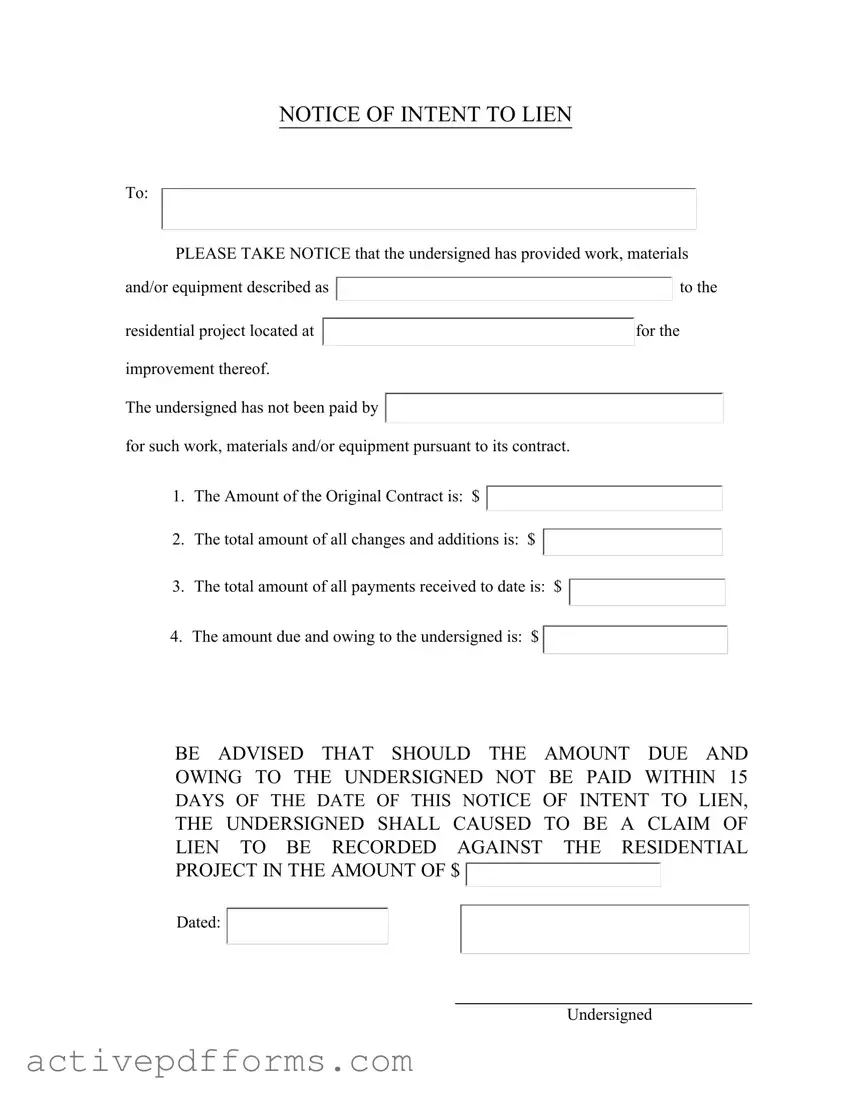Free Letter Of Lien PDF Template
A Letter of Lien form serves as a preliminary notice from a contractor, subcontractor, or supplier to the property owner, indicating an intention to file a legal claim against the property if unpaid for work, materials, or equipment provided. This document outlines the monetary details of the contract, including the original contract amount, any changes or additions, payments received, and the outstanding balance owed. It's a crucial step in securing the rights to compensation for contributions to a residential project.
Edit Letter Of Lien Now



